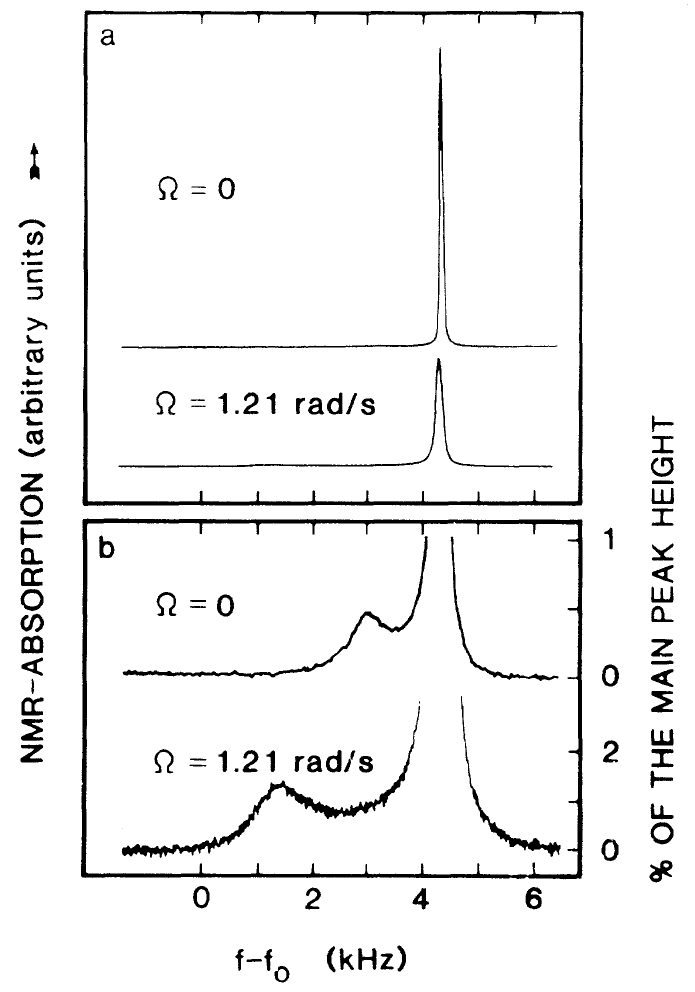
The NMR
satellite in A-phase is observed in addition to the
Ω-dependent
broadening of the main peak observed in the first
experiments. This satellite remained unobserved in
our previous experiments because its amplitude is
very small.
The vortex satellite was observed only during rotation; its frequency shift and intensity behaved reproducibly. Because this satellite is broad, it can be seen as a separate peak only sufficiently far from Tc, mainly in supercooled He3-A, where the bulk A-phase frequency shift is large. The area of the satellite depended linearily on the angular velocity as expected for vortices, the number of which is linear in Ω. This linear dependence, combined with the result that the satellite frequency does not depend on Ω, provided compelling evidence for vortices in rotating He3-A. Due to the strength of the satellite peak, it was concluded that the satellite was produced by localized spinwave modes trapped on each vortex core.
FIGURE Transverse NMR absorption line shapes at 1—T/Tc = 0.267 as a function of frequency showing the satellite peaks as well as the Ω-dependent broadening of the main A-phase peak. Part (b) is a closeup of part (a), showing the soliton peak at Ω = 0 and the vortex peak at Ω = 1.21 rad/s. In the latter case the soliton peak has already decayed.
The vortex satellite was observed only during rotation; its frequency shift and intensity behaved reproducibly. Because this satellite is broad, it can be seen as a separate peak only sufficiently far from Tc, mainly in supercooled He3-A, where the bulk A-phase frequency shift is large. The area of the satellite depended linearily on the angular velocity as expected for vortices, the number of which is linear in Ω. This linear dependence, combined with the result that the satellite frequency does not depend on Ω, provided compelling evidence for vortices in rotating He3-A. Due to the strength of the satellite peak, it was concluded that the satellite was produced by localized spinwave modes trapped on each vortex core.
FIGURE Transverse NMR absorption line shapes at 1—T/Tc = 0.267 as a function of frequency showing the satellite peaks as well as the Ω-dependent broadening of the main A-phase peak. Part (b) is a closeup of part (a), showing the soliton peak at Ω = 0 and the vortex peak at Ω = 1.21 rad/s. In the latter case the soliton peak has already decayed.